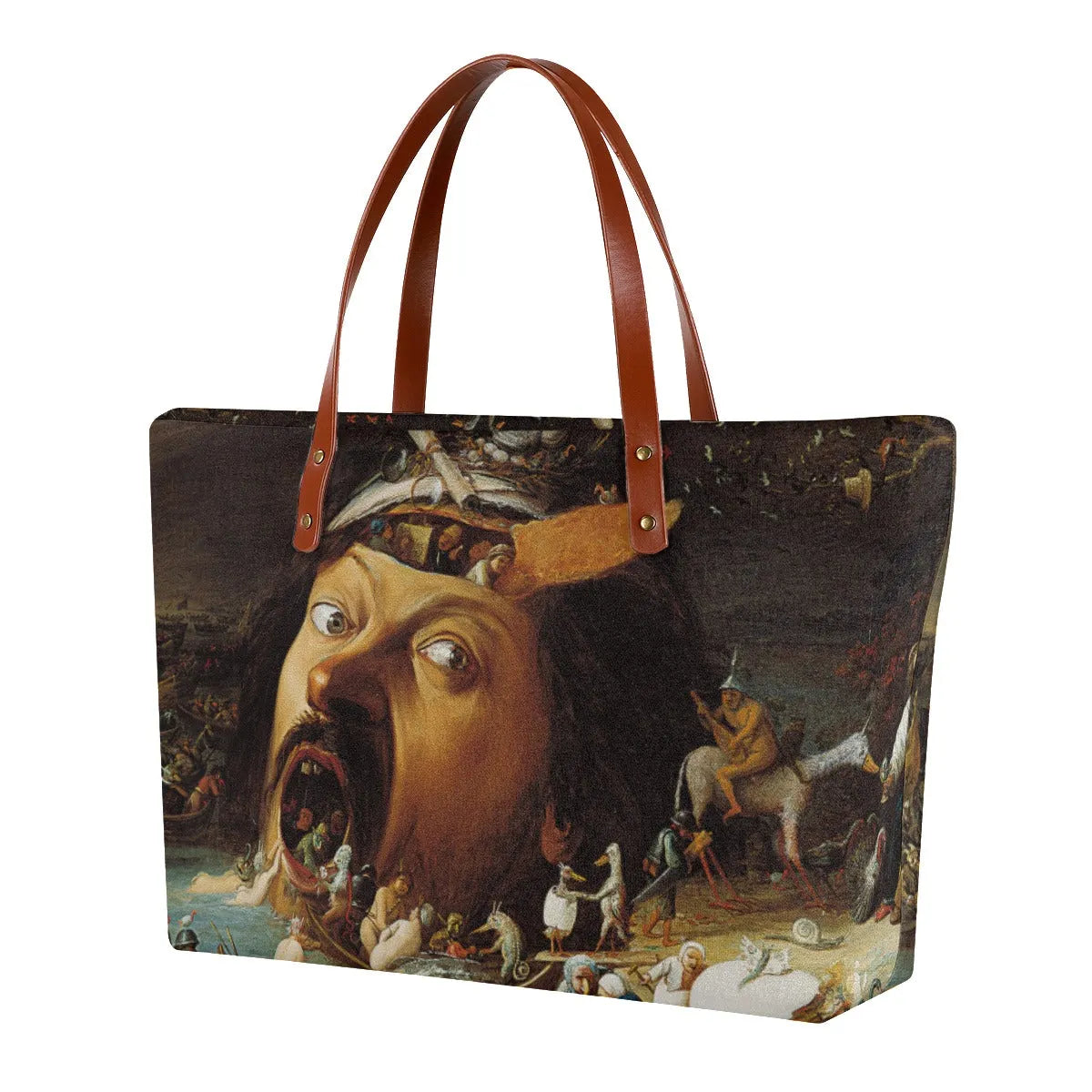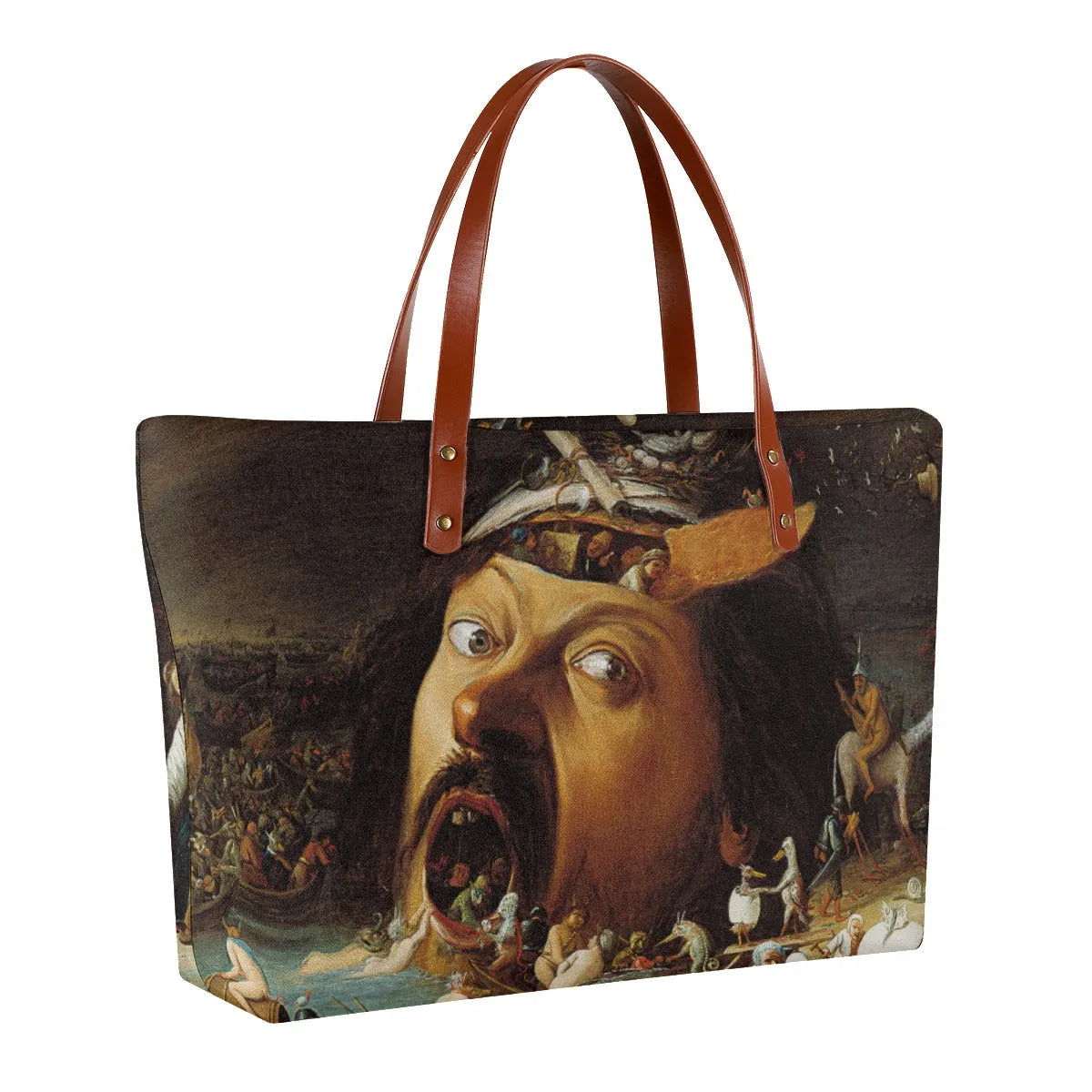



The Temptation of St Anthony by Hieronymus Bosch Tote Bag
Prepare to be the center of attention as admirers and fellow art aficionados gather around, drawn by the mesmerizing depiction of "The Temptation of St. Anthony." Engage in captivating conversations about the symbolism, mysticism, and intricacies of the artwork. This tote bag not only complements your personal style but also sparks intriguing dialogues that delve into the world of art history. Stand out from the crowd and let your fashion choice become a gateway to fascinating discussions.
Elevate your fashion game and practicality simultaneously with our meticulously crafted tote bag. Designed for modern art enthusiasts, this bag combines the beauty of Renaissance art with the convenience of a versatile accessory. Sturdy canvas and reinforced stitching ensure durability, while the spacious interior provides ample room for your belongings. Whether you're headed to work, the market, or a social gathering, this tote bag seamlessly complements your ensemble and lifestyle.
- Made of Diving Cloth
- Waterproof Fabric
- Large capacity
- Black zipper and Lining
- Brown strap
- Double-sided Famous Painting Art
Discover the surreal and enigmatic world of Hieronymus Bosch, one of the most celebrated artists of the Renaissance period. Here are more of Hieronymus Bosch's Famous Paintings.
About the artwork
We are aiming to have your order dispatched from our facility within 48 hours. However, please bear with us in case we are spending extra time in checking / perfecting your items, particularly during the peak season around end of the year. This does not include weekends or holidays.
Purchases made after 6pm PT will not be shipped out until the next business day. If you order after 6pm PT on a friday, your order will likely be shipped out on the following monday. For more information click here.
We provide a return policy, allowing customers to return products within a specified timeframe if they are not completely satisfied. For more information click here.
We offer a range of secure payment methods, including major credit cards and debit cards such as Mastercard, Visa, and American Express. Additionally, we support digital wallets like Apple Pay and allow for seamless transactions through trusted platforms like PayPal. For more information click here.
Choose options




20% Off Everything - Limited time only.
Enjoy Free Shipping on All Orders!
